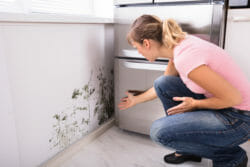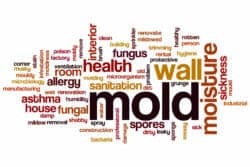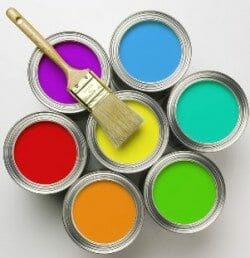How To Get Rid Of Mold In A House, Plus Legal Requirements
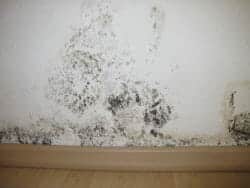
Mold Removal Steps and Legal Requirements
Homeowners and buyers should understand the legal requirements of removing mold, as well as any licensing requirements; whether they’re doing it themselves or hiring a mold remediation company. Often the first couple of questions that homeowners and buyers have are:
- Can you do it themselves?
- Should you hire a professional?
- What steps should you take?
Basically, homeowners want to know how to get rid of mold in their house and are there any legal requirements.
First step is testing
Before starting a mold clean-up or removal process you should first confirm that mold is present. At times you may visually see what appears to be mold and if there is moisture evidence or a leak nearby it may add weight to your visually observations.
Testing for mold is one of the most reliable methods of knowing if mold really does exist in your home. It will also help identify what type of mold is present.
Choice 1 – DIY Test Kits
DIY test kits are usually available from a local hardware store or big box home repair store; another common source is to purchase a test kit online. With these kits you normally take air samples in the affected areas, mail the samples to a lab (usually one that is part of the kits’ purchase price). The lab then tests the samples and reports back to you about any mold present and the type of mold they discovered.
Choice 2 – Hire a professional mold testing or inspection company
Mold testing may be conducted by a mold inspector who may work for himself or a mold remediation company. They will take air samples for you and send them to a lab. Once the lab results are complete they will usually write a report and make recommendations to you.
Second step – Stop the moisture source
Mold can not grow without a source of moisture, therefore once you have determined that mold exist, then it’s important to eliminate the source of moisture. This may entail things like repairing a leak, reducing the humidity in the home, relocating vents or other fixes.
Third step – Remember the legal aspects
In some states if you use a professional mold remediation company, they may need to have a State License or be certified; also the regulations may vary from city to city and building jurisdiction to building jurisdiction. Presently most states do not require licensing of mold remediation companies or inspectors, however it may be wise to check with your local building jurisdiction.
If you’re planning on doing the work yourself, you may not be able to do so, for it may depend on what the work entails and where you live. Should you live in a condo, apartment or duplex, there may be restrictions preventing the owner or tenant doing the work themselves by the local building jurisdiction or by a city ordinance. Part of the reason for this is that removal work by a non-professional may result in mold spores floating into the adjacent unit causing a mold problem in that unit.
If it’s questionable about the work you’re going to do, just make a quick call to the city or local building jurisdiction for answers.
Fourth Step – Determine the level of mold clean-up

Mold on Non-Porous Surfaces
Mold that has formed on the top of non-pores surfaces such as tile, counter tops, tubs, plastic or fiber glass items is usually easily cleaned with antimicrobial mold remover, bleach mixed with water or similar types of cleaners. Avoid ammonia-based cleaners and do not mix ammonia with bleach for toxic gases can be created. Removing mold from small areas with non-porous surfaces is usually easy and often done by the homeowner.
Mold on and in Porous Surfaces
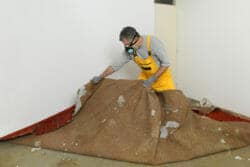
A general rule is that materials that are porous with mold in or on them will need to be removed and hauled away. Examples would be:
Carpet. Professionals will often cut moldy carpeting into 6-foot-wide strips that are sprayed down to help reduce spores from floating off the carpet; then the carpet is rolled up, wrapped in plastic and removed from the home.
Drywall. Moldy drywall will be torn off the walls and ceilings, then covered and removed from the building.
Insulation. Insulation in attics, walls or under flooring that has mold will usually be bagged and removed from the home.
Ceiling tiles. Porous ceiling tiles cannot be cleaned; therefore, they should be removed.
Flooded areas. Items such as appliances and furniture that have been soaked or covered by contaminated water leaks or by flooding are usually removed.

Personal protection and reducing the spread of mold spores
When cleaning moldy areas wear protective gear, including a N-95 or higher rated face mask approved by the National Institute for Occupational Safety and Health (NIOSH), disposable rubber gloves and protective eye wear. Note that the larger the area being cleaned and the more complex the job is; the more the need for additional protection and equipment. These often include:

Sealing off area of work
Sealing off the area to be worked on to prevent mold spores from spreading to the rest of the house is wise. Plastic sheets are usually used to seal off air and HVAC ducts, doors, windows and openings to other rooms. At times, portions of the walls, floors and ceilings will also be covered.
Creating negative air pressure in work area
Contractors will often create a negative air pressure in their work area so that mold spores and dust is not blown into adjacent rooms that are not contaminated by mold. They will also use blowers and dehumidifiers to dry up or reduce moisture in moldy areas and use vacuums with HEPA filters.
Bottom Line
Homeowners can do mold removal themselves in many situations, however before jumping into the process they should do mold testing to make sure they even have mold.
Addressing mold issues before they become major will make the remediation process significantly cheaper and easier to accomplish.
When contemplating whether to do the remediation yourself, consider the condition of your health, the complexity of the job and do you have the proper equipment.

